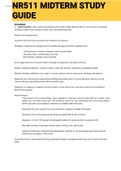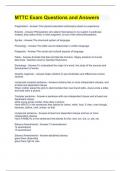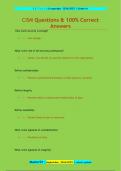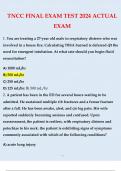Exam (elaborations)
NR511 MIDTERM STUDY GUIDE (NR511)
- Course
- Institution
Exam (elaborations) NR511 MIDTERM STUDY GUIDE (NR511) 1. Actinic keratosis most common precancerous skin lesion in light skinned patients, more common in patients 50 years or older (most common in Celtic, Irish, and Scottish descent) Found in sun exposed areas Caused by skin cells that accumul...
[Show more]







